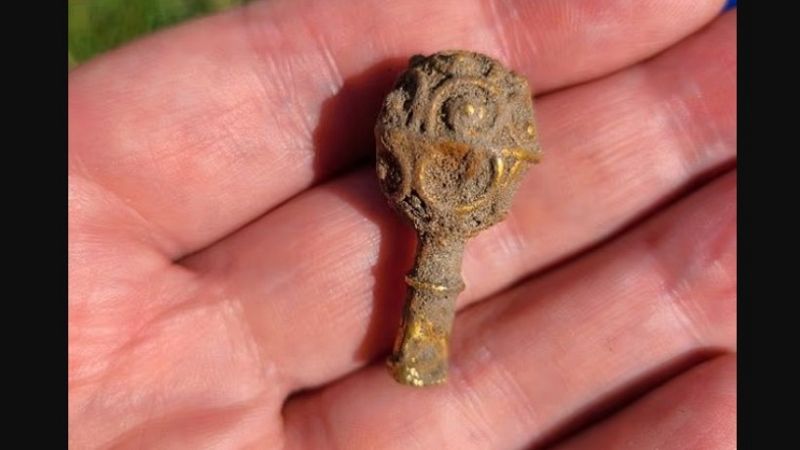Archaeology student finds 1200-year-old gold in his first excavation

An archaeology student from the US state of Florida has discovered a rare 9th-century gold object during her first excavation in the UK.
The student, Yara Souza, unearthed a gold medallion from the medieval period in about 90 minutes during work carried out by Newcastle University in the Redesdale area of Northumberland in July.
"I couldn't believe I found something so fast on my first dig, it was quite an exciting and slightly overwhelming experience," Souza told the Daily Mail.
According to the university, the object, which dates back to the 800s, is about four centimetres long and has a decorative ornament on one end. The piece was found close to the route of Dere Street, an important road connecting York and Edinburgh during the Roman Empire.
This road continued to be used after the fall of Rome and became part of the A68 motorway, which today runs from Edinburgh, the Scottish capital, to the north-east of England.
According to experts, the gold object may have had a religious or ceremonial function. Gold was a high-status material used by the elite of the period, and Dere Street connected two major religious centres.
James Gerrard, Professor of Roman Archaeology at Newcastle University and Souza's supervisor, said: "This is an exciting discovery of exceptional quality. I am delighted for Yara that she has made such a find so early in her career."
Gerrard also pointed out that Dere Street was an important route in the post-Roman period, saying: "This object shows that high-status people continued to use the road. It may have been deliberately buried," he added.
Souza is studying archaeology at Newcastle University. Recalling that she was unable to take part in the excavations of the Roman fortress at Birdoswald last year due to illness, she said: "It was incredible to find something that had not seen the light of day for over a thousand years after waiting a year. I literally passed out," he said.
Today

